Alkanet Root Powder Red Dye
NaturalDye.us offers finely ground roots of Alkanna tinctoria, known as Alkanet Root Powder Red Dye (true Dyer’s Alkanet). This ancient dye, used for thousands of years in the Mediterranean region, has recipes recorded on papyrus scrolls.
Moreover, alkanet contains at least two primary pigments that are not water-soluble and change color with pH levels. With proper extraction and dyebath methods, it can produce beautiful lavender and periwinkle blue colors;
without the right adjustments, it may result in muddy browns. For best results, use 100% weight-of-fabric on wool or alpaca; expect paler results on cotton and silk.
Cultural or Historical Significance of Alkanet Root Powder Red Dye
Dyer’s Alkanet (Alkanna tinctoria) is a small flowering plant native to the Mediterranean region. While it produces beautiful blue flowers, natural dyers prize its roots. These roots contain two powerful naphthoquinone compounds—alkannin and shikonin—which are mirror images of each other at the molecular level. Both are potent dyestuffs capable of producing a range of violet and blue shades.
Moreover, alkanet has a long history of use as a dyestuff in the classical world. In the first century A.D., Pliny reported that “it is used for imparting rich colours to wool.” Several recipes for dyeing wool with alkanet have been found written on papyrus scrolls from the early years of the Eastern Roman Empire.
Notably, alkanet was especially valued for its ability to dye wool purple at a time when the only other route to that color was the Tyrian purple produced from murex snails.
However, the challenge in working with alkanet lies in the nature of its dyestuffs, which are insoluble in water and highly sensitive to pH and temperature. Researchers have suggested that alkanet roots contain two dye fractions: a red fraction soluble in oil and a blue fraction soluble in alcohol.
Consequently, each fraction requires different extraction methods, changes color depending on the pH of the dyebath, and is damaged by high temperatures. If the extraction and dyebath are not constructed correctly, alkanet tends to produce muddied purple and brown shades. However, when all goes well, it can yield beautiful lavenders and periwinkle blues that make the effort worthwhile.
Safety Precautions for Alkanet Root Powder Red Dye
-
Do not ingest this product. Use it exclusively for textile dyeing; it is not intended as an herbal supplement.
-
Avoid eye contact. If the dye comes into contact with your eyes, rinse them immediately with cool water.
-
Do not apply the dye directly to your skin or hair. This product is not suitable for use as a cosmetic additive.
-
Open containers carefully to prevent spills or dust clouds. Work in a well-ventilated area and avoid inhaling any dust. If necessary, wear a mask when handling fine powders.
-
Clean up spills promptly using a paper towel or disposable rag to prevent staining.
-
Use dedicated dyeing equipment only. Do not use any pots, containers, spoons, tongs, thermometers, or other utensils for dyeing that you also use for food preparation.
-
Keep the dye and all dye baths or mordant solutions out of reach of children and pets. Ensure that an adult supervises all dyeing activities.
-
NaturalDye.us is not liable for any misuse of this product or unintended staining of clothing, workspaces, or other property. Use the product only as directed.
Recommended Supplies for Alkanet Root Powder Red Dye
-
Select a dye pot large enough to accommodate all your fibers, allowing ample space for movement and proper liquid circulation.
-
Use metal tongs dedicated to dyeing for stirring and safely removing fabric from the dye bath.
-
Wear rubber gloves while handling mordanted or dyed fibers before rinsing to protect your skin.
-
Monitor the dye bath temperature with a candy thermometer that clips to the side of the pot for accurate readings.
-
Weigh your materials using a reliable scale to measure fiber, mordant, and dyestuff accurately.
-
Apply an alum mordant (aluminum potassium sulfate, also known as potash alum) to prepare fibers for dyeing.
-
Strain out root particles using a fine mesh strainer and large coffee filters to prevent residue from clinging to fibers.
-
Adjust dye bath pH with a small amount of pickling lime (calcium hydroxide), approximately 1% of the weight of the fiber (WOF), to shift colors from lavender to periwinkle blue.
-
Extract color from the roots using grain spirits, which effectively draw out the dye compounds.
Recommended Materials and Uses
Alkanet Root Powder Red Dye is as flexible as it is beautiful. It can be used across many creative projects, from skincare to home décor. Here are some of the best materials to pair it with, and how you can use it effectively:
- Cosmetics: Add color to lip balms, oils, and lotions
- Textiles: Works on cotton, silk, and wool (with a mordant)
- Wood Finishing: Soak in oil to stain wood with a warm red hue
- Soap: Use in cold process soaps for natural coloring
- Cooking: In small amounts, food-grade dye can color dishes like rogan josh
Application and Usage Instructions
To get the best out of Alkanet Root Powder Red Dye, it’s important to follow the right techniques. Whether you are working with oils or fabrics, these instructions will help you unlock vibrant, natural colors:
Mordanting with Alum
While you can dye animal fibers with Alkanet Root Powder Red Dye without a mordant, applying an alum mordant significantly enhances color depth, especially for purples and blues.
Instructions for Mordanting Protein Fibers (Wool, Silk, Alpaca, etc.):
-
Weigh the Dry Fibers: Determine the dry weight of the fibers you plan to dye.
-
Calculate Alum Quantity: Multiply the fiber weight by 0.12 to find the correct amount of aluminum potassium sulfate (alum) needed.
-
Prepare the Mordant Bath: Fill a dye pot with hot tap water, leaving enough space for the fibers to move freely.
-
Dissolve the Alum: Add the calculated amount of alum to the water and stir with a spoon or metal tongs until fully dissolved.
-
Soak the Fibers: Gently place the fibers into the mordant solution, ensuring they are fully submerged.
-
Heat the Solution: Gradually heat the mordant bath to approximately 180°F (82°C). Maintain this temperature for 1 hour. If you don’t have a thermometer, look for steam rising without bubbling; if bubbling occurs, reduce the heat.
-
Stir Occasionally: Every 15–20 minutes, gently stir the fibers to promote even mordanting.
-
Cool the Fibers: After an hour, remove the pot from heat and allow it to cool to room temperature.
-
Optional Extended Soak: For improved results, especially with thick or tightly woven fabrics, let the fibers steep overnight in the mordant bath.
-
Rinse the Fibers: Once cooled, wearing rubber gloves, gently squeeze excess mordant solution back into the pot. Rinse the fibers briefly in lukewarm water to remove any residual alum.
-
Prepare for Dyeing: Set the rinsed fibers aside until you’re ready to dye.
-
Safety Precautions: Keep the mordant solution and treated fibers out of reach of children and pets.
- Dispose of Mordant Solution: Follow local guidelines for disposing of the used mordant solution responsibly.
For Cellulose Fibers (Cotton, Linen, etc.):
lean the fibers thoroughly to remove impurities. Traditionally, this is done in a highly alkaline soda ash solution. Add 2 teaspoons of soda ash and 1 drop of dish soap to a 5-gallon dye pot.
Furthermore, add the cellulose fibers and heat to 180°F–190°F for an hour, stirring occasionally. After removing from heat and allowing to cool to a manageable temperature, rinse and wring out the fibers well.
Alternatively, use household detergents like Tide©, which are also alkaline (pH 11). You can wash the fibers in a washing machine on a high-temperature cycle with plenty of detergent.
Although this method doesn’t clean as deeply as simmering with soda ash, it yields better results than not scouring at all.
Making an Alkanet Tincture
Alkannin, the primary purple and blue pigment in alkanet roots, is almost entirely insoluble in water. However, Alkanet Root Powder Red Dye dissolves in alcohol, making alcohol extraction the most effective method for obtaining the dye. We typically use bottom-shelf vodka, but any clear spirit should suffice.
-
Weigh the required quantity of alkanet root; we generally recommend using 100% weight-of-fabric (i.e., use the same weight of alkanet root powder as the dry weight of the fibers).
-
Place the alkanet root powder in a glass mason jar, ensuring there’s enough room left for a few cups of liquid.
-
Add at least 1 cup of grain spirits per ounce of alkanet root, ensuring there’s plenty of liquid to pour off into the dye bath. We use inexpensive 100-proof vodka, but any clear spirit should work. While high-proof spirits like Everclear are effective, they aren’t necessary.
-
Mix the spirits and root powder thoroughly, then seal the jar. Label it clearly to prevent accidental ingestion, and let the roots steep for a minimum of 24 hours. For optimal results, we recommend steeping for 3-5 days.
-
When ready to prepare the dye bath, carefully unseal the jar and pour the tincture through a coffee filter into the dye bath, aiming to leave as much of the root powder as possible at the bottom of the jar. Alkanet Root Powder Red Dye grinds very finely, and if particles enter the dye bath, they will cling tenaciously to your fiber.




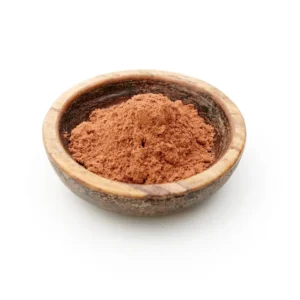
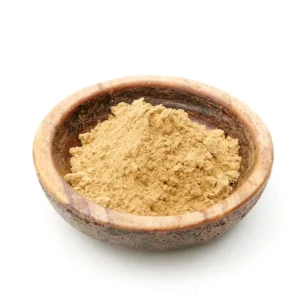
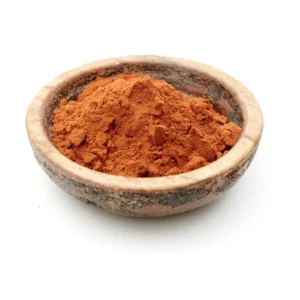
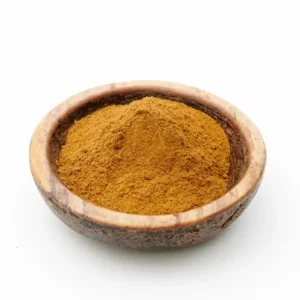
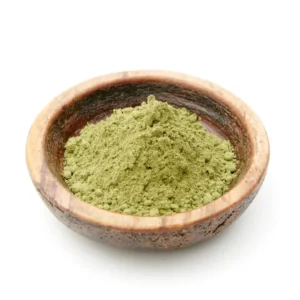
Reviews
There are no reviews yet.